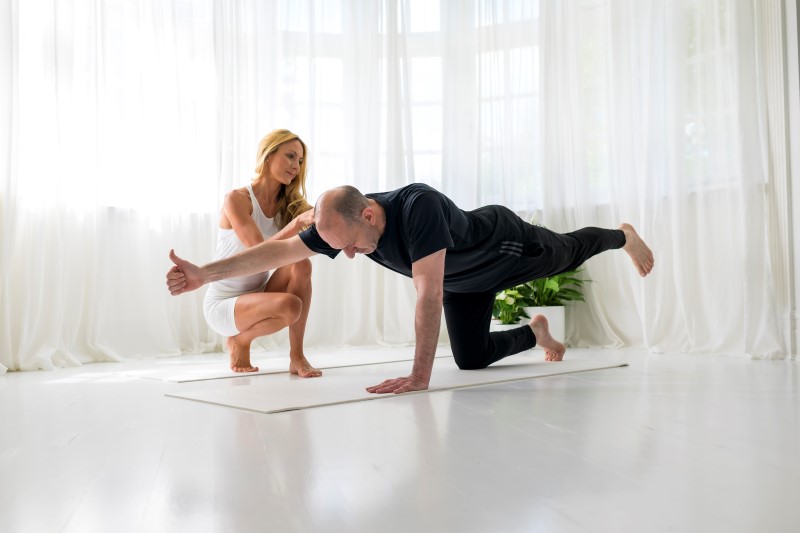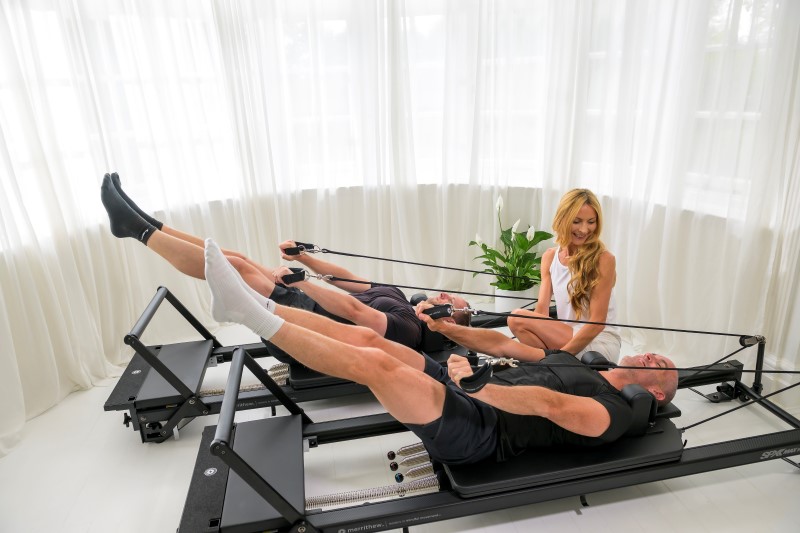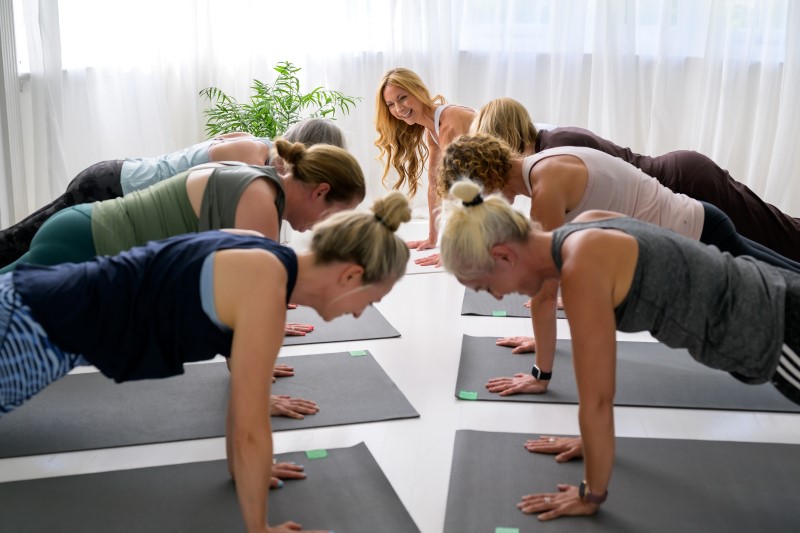The pelvic floor muscles are easily neglected (unless you come to my classes of course as I constantly remind my clients to lift up and engage their pelvic floor muscles!), but it is crucial to keep this vital, hammock-like muscle in shape and prevent problems in the future.
What is your pelvic floor?
The pelvic floor (“PF”) refers to the hammock like muscles that supports the organs within the pelvis and controls the openings for the bladder, reproductive organs and bowel. Imagine your pelvis to be like a grocery bag, and the PF is the bottom of the bag. Both men and women have a PF and it is very important to keep it strong to help with good bladder and bowel control, even to improve … dare I say sexual pleasure …. and very importantly, to prevent bladder and/or bowel prolapse, incontinence, and dysfunction.
What weakens your pelvic floor?
The PF muscle can be weakened by:
– Pregnancy and child birth – not only does the PF acts as a trampoline for the baby, in month 9, a woman has an average of 13 pounds weighing on her pelvic floor!
– Being overweight
– Constipation – Think of the grocery bag and all the additional weight in your intestines putting a strain on the bottom of the bag.
– Heavy lifting – Increases intra-abdominal pressure (plus, if you have poor lifting technique and a weak core, you put your back under strain and at high risk of an injury).
– High-impact exercise – Running, jumping, aerobics etc, all puts additional strain on the PF.
– Age ! – As we age, gravity takes its toll, plus the older you get your muscles get weaker if you don’t use them.
– Inactivity – Just like any muscle, if you don’t use it you lose it!
How to isolate and activate your pelvic floor muscles
The pelvic floor muscles attach to your pubic bone, to the lateral walls of the pelvis at the sides, and to the coccyx at the back.
Think of your pelvic floor muscles as a clock face. Pubic bone is at 12 o’clock, coccyx or tailbone points at 6 o’clock and your hips are set at 3 o’clock and 9 o’clock. What you want to do is squeeze the numbers together in the centre and lift them up toward your belly button (squeeze inwards and upwards). See if you can hold the muscles up for 5 – 10 seconds. See if you can isolate the muscles, without squeezing your bottom muscles or overly contracting your tummy muscles.
Another analogy is to imagine your pelvic floor is an elevator that travels between 5 floors, your belly button being the 5th floor. Bring the elevator up from the first floor, to the 2nd, 3rd, 4th and then hold the elevator at the 5th floor.
Pelvic floor muscle exercises should include long squeezes as well as short, quick squeezes. You should work the muscles until they tire and do the exercises regularly to help the muscles become stronger and more effective.
Can men do pelvic floor exercises too?
Absolutely! Guys – imagine you are going for an early morning swim in your speedos and as you enter the water, it is a little fresh. You bravely continue to immerse yourself into the water as it rises to your knees; you see a wave approaching but you are not quite ready to get cold and wet so just before that wave hits your thighs you suck in. That action is a pelvic floor lift. Correct pelvic floor activation for men is just as important as it is for women, particularly for conditions like lower back pain, pelvic instability and dysfunction.
Work it
Once you’ve mastered activating your pelvic floor in isolation see if you can engage it through out your day – like right now, when you are sitting at your desk, walking, running, lifting weights etc.
Pilates
If you struggle to work your pelvic floor muscles, get yourself to my Pilates class. We work our pelvic floor muscles in every class.
For more information, please see here https://elizabethnadine.com/ and for my timetable here – https://elizabethnadine.com/weekly-timetables/
Or get in touch at info@elizabethnadine.com










